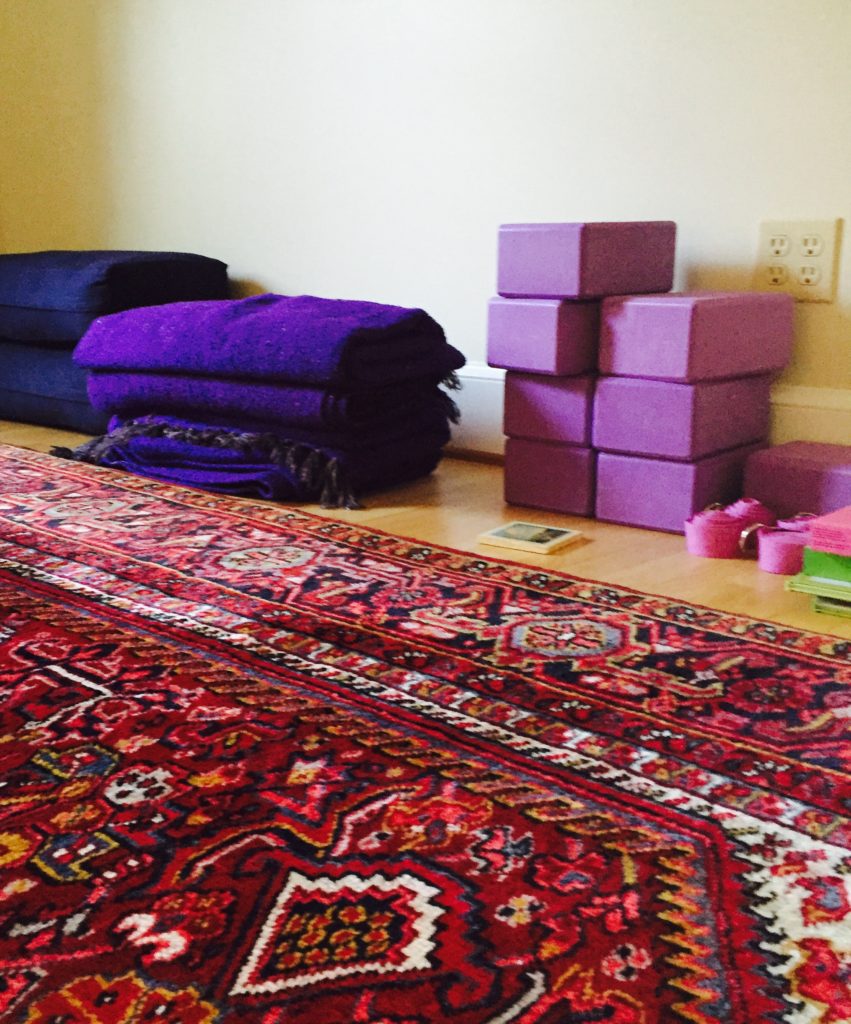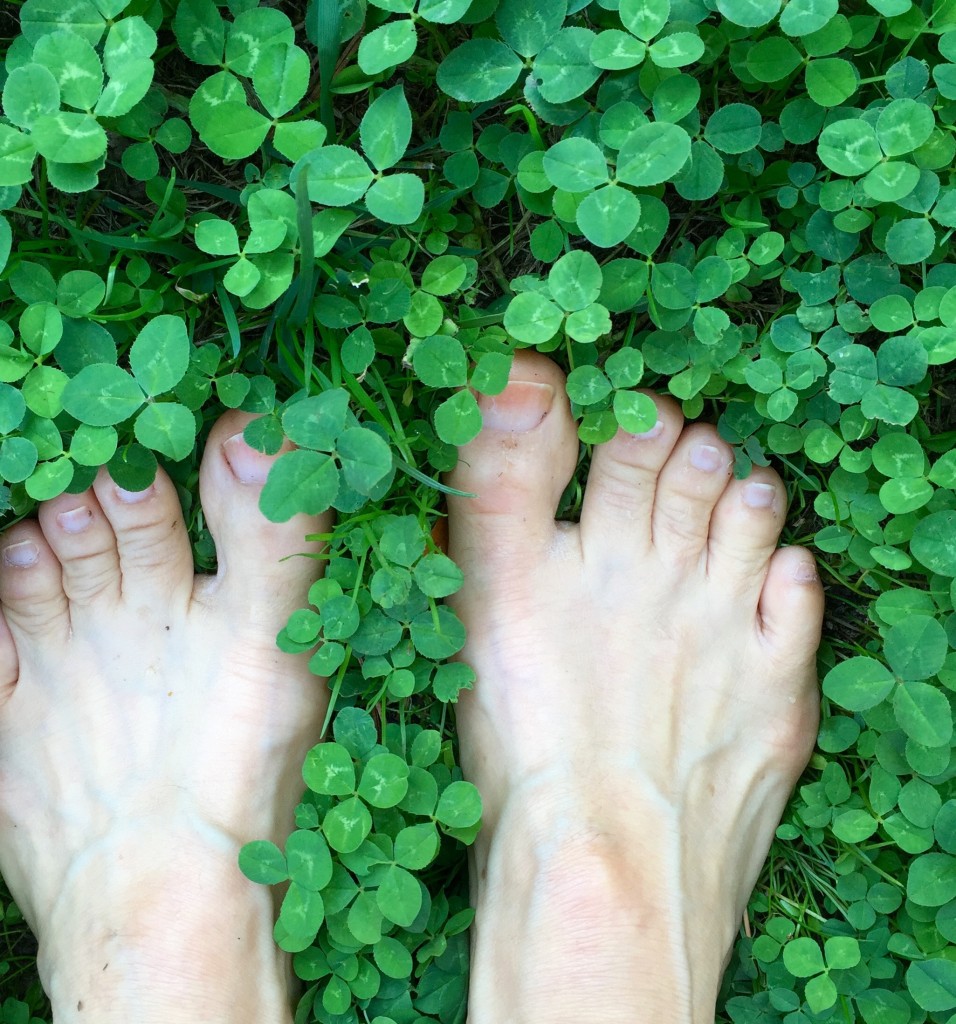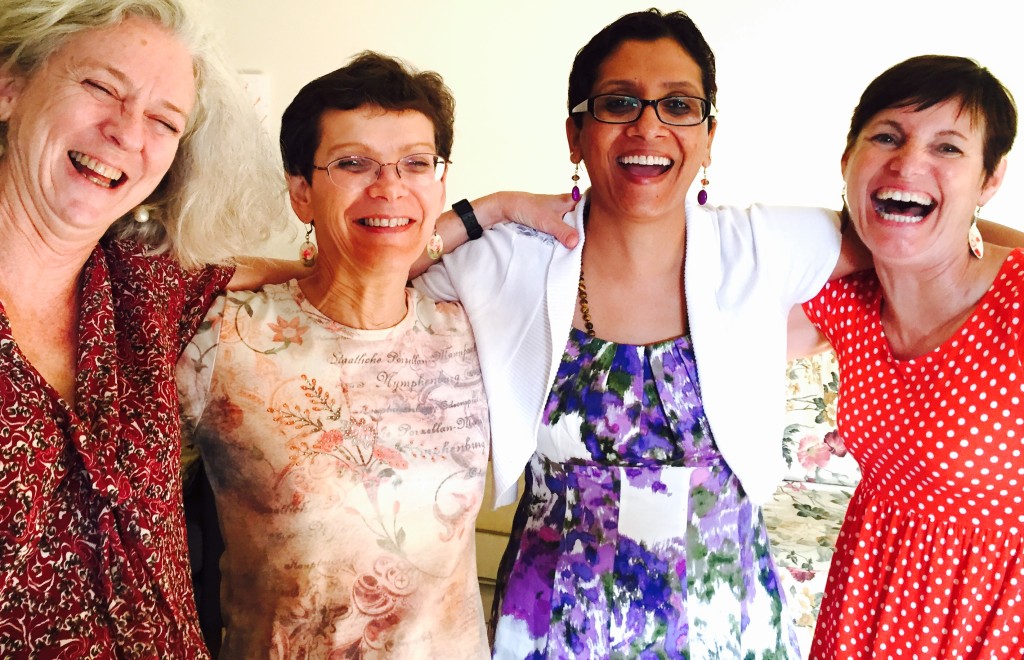
How do you view yoga props? Do you see them as yoga studio objects used only by those who need them? Let’s challenge our opinions, and subsequent use of props, in the spirit of building a fuller, supported, yes, even dare I say, more robust yoga practice!
What would be different if you could move from “prop judgement” to “prop embrace”? At times, blocks, bolsters, and blankets may seem like materials that hinder rather than help your yoga class experience. Unhealthily challenging oneself by trying to force a position often trumps finding ease, stillness, and breath in the midst of a pose. Embracing props may allow the mind to rest or body to extend in a pose. Props can promote better alignment, use of body’s anatomical wisdom, and actually experience ease more fully. Let’s illustrate this concept of support and ease a bit closer.
Sukasana, or Easy Pose, provides a perfect example. It’s the familiar cross-legged position we often start or end class with, or use for seated meditation. In spite of the pose name, for many, finding comfort in the hips and knees is challenging here. So, why not sit on a block, blanket, or even bolster in order to elevate the hips? This simple method allows the calves, knees, and ankles to move naturally toward the earth through the benefit of gravity. Perhaps the greatest benefit of prop use here is for belly movement. That is, the abdomen can now relax more, therefore helping the breath to move down the torso and fully expand. Try this yourself: sit first in Easy Pose on the carpeted floor or a mat, drop the shoulders, straighten the spine, and notice the breath for 8-9 cycles of inhalation and exhalation. Now, sit on the prop of your choice. Practice the same breath exercise. What do you notice?
Like a theatre prop, a yoga prop can be seen through the lens of helping to create an experience. Even though we are not in a play production or performance in a yoga class, we are, indeed, intentionally building a compassionate atmosphere of body and mind restoration. So, the next time you come to class, invite yourself to pick up a prop you’ve never used, or ask the teacher to help you use it in a particular pose. Demonstrate your courageous self and move towards flow and discovery in a familiar pose, in a new, perhaps more open way. Namaste.









